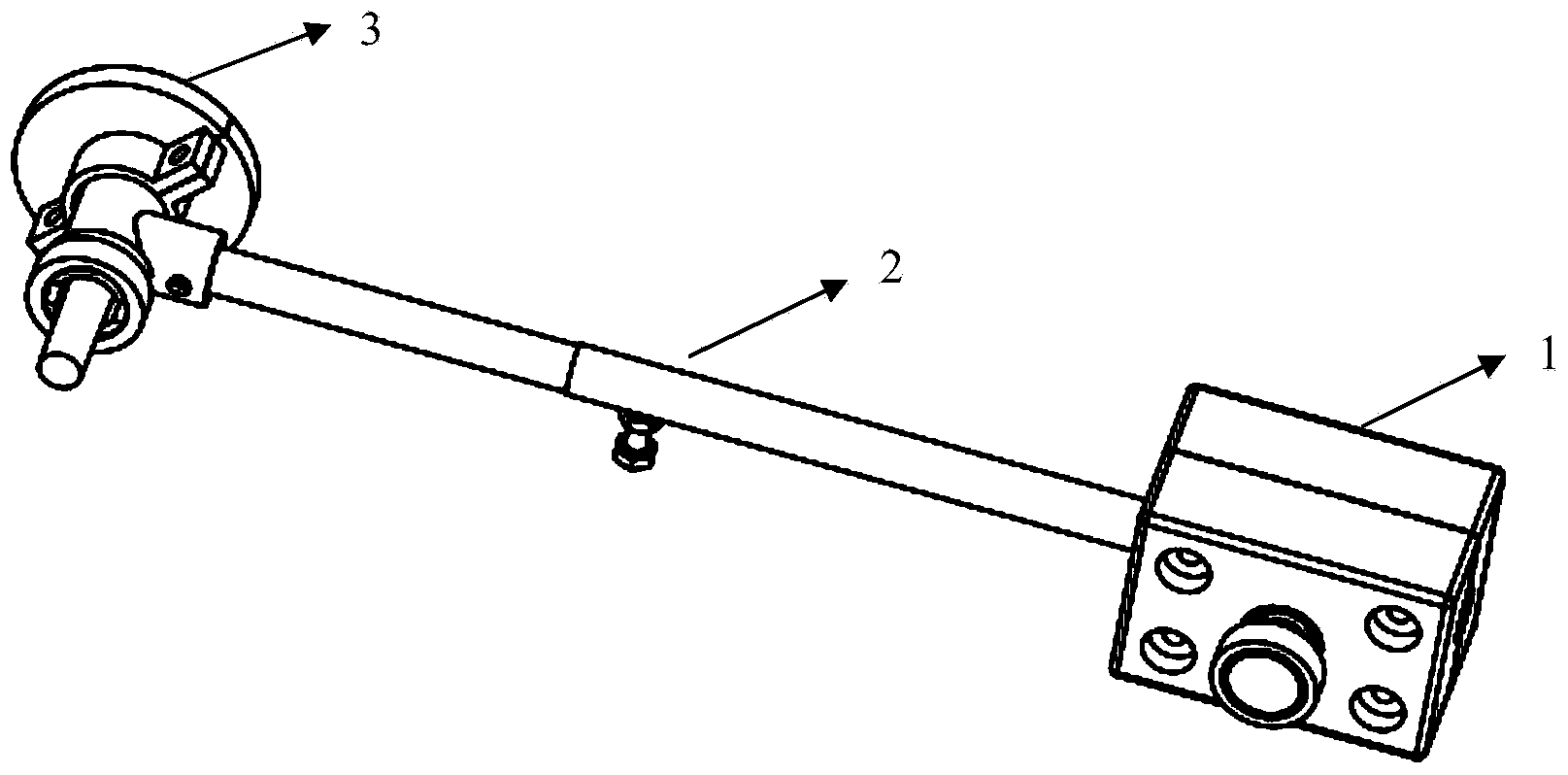Portable four-degree-of-freedom teaching compass
A portable, high-degree-of-freedom technology, applied to circular curve plotters, anti-slip devices, printing, etc., can solve problems such as inability to stretch the cross arm, high space occupancy, and deviation of circle radius, etc., to achieve convenient and quick adjustment, The effect of low space occupation rate and reduced degree of distortion
- Summary
- Abstract
- Description
- Claims
- Application Information
AI Technical Summary
Problems solved by technology
Method used
Image
Examples
Embodiment Construction
[0040] In order to make the object, technical solution and advantages of the present invention clearer, the present invention will be further described in detail below in conjunction with the accompanying drawings and embodiments. It should be understood that the specific embodiments described here are only used to explain the present invention, not to limit the present invention.
[0041] Such as figure 1 As shown, the portable four-degree-of-freedom teaching compasses in this embodiment includes a main body supporting device 1 , a telescoping device 2 and a brush holding device 3 connected in sequence.
[0042] Such as figure 2 As shown, the main body supporting device 1 includes an upper shell 11 , a lower shell 12 , a rolling bearing 13 and a fixing frame 14 . The upper casing 11 and the lower casing 12 have threaded holes that cooperate with each other, and can be fixedly connected with screws; There is a countersunk hole in the center of the lower surface of the lowe...
PUM
 Login to View More
Login to View More Abstract
Description
Claims
Application Information
 Login to View More
Login to View More - R&D
- Intellectual Property
- Life Sciences
- Materials
- Tech Scout
- Unparalleled Data Quality
- Higher Quality Content
- 60% Fewer Hallucinations
Browse by: Latest US Patents, China's latest patents, Technical Efficacy Thesaurus, Application Domain, Technology Topic, Popular Technical Reports.
© 2025 PatSnap. All rights reserved.Legal|Privacy policy|Modern Slavery Act Transparency Statement|Sitemap|About US| Contact US: help@patsnap.com



